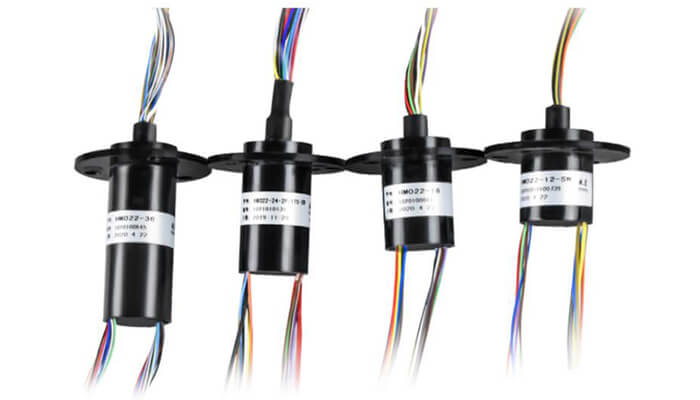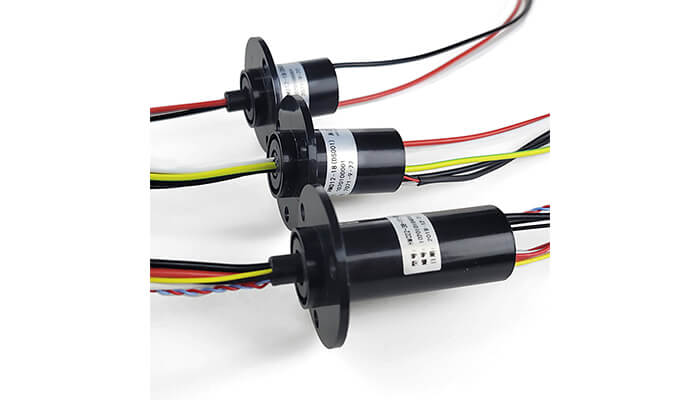In today’s technologically advanced world, the process of transmitting power, data, or signals is a crucial part of numerous devices and systems, and navigating these processes efficiently has become an obligatory need. A key player in this arena is the wire connector, a small device with a big job, linking electrical circuits to support the transmission of these signals.
Among these connectors, one interesting, yet often overlooked variant, is the rotating wire connector. It finds its unique place in this vast spectrum, offering a blend of functionality and convenience. These connectors serve a pivotal role in allowing the flow of electrical power or signals between stationary and rotating components.
The concept of establishing connections between rotating and stationary parts may sound complicated or even counterintuitive – but that’s where the rotating wire connector works its magic. It essentially bridges the divide, ensuring an uninterrupted transmission while components spin freely.
The following guide takes you on a journey, providing insights into the world of rotating wire connectors. We will delve into understanding what these connectors are, their benefits, and their use in varied applications. We will also walk you through the installation process, and safety measures, and get answers to frequently asked questions. By the end of this guide, you’re likely to appreciate the significant impact these tiny connectors have on our everyday technology.
What Are Rotating Wire Connectors?
When it comes to the realm of electrical and electronic devices, the devil is often in the details. One such intricate detail that plays an indispensable role in the smooth functioning of these devices is the rotating wire connector. Interestingly, the name itself provides substantial hints about its function and design.
Rotating wire connectors are unique components engineered to seamlessly maintain electrical connections while allowing the connected parts to rotate. This sets them apart from traditional connectors, which typically require stationary or fixed connections for efficient power transmission.
The crux of a rotating wire connector lies in its ability to forge a link between static and rotating components without disrupting the overall function or efficiency of the device. In essence, they ensure a reliable, continuous flow of electricity or data, even as they (or the parts they’re connected to) twist and turn.
The critical features of these connectors include their solid build quality, shock resistance, and ability to withstand considerable operational speeds and power capacities. These characteristics can vary based on application requirements and manufacturing specifications.
A pulsating heart, an insightful brain, or a spinning top; a variety of metaphors could depict the function of this connector. However, its fundamental role remains constant: facilitating an unbroken path for streams of electric current or data to traverse, regardless of the rotation occurring within the equipment. As we delve deeper into their benefits and applications, the pivotal role these connectors play in our interconnected world becomes even more apparent.

Advantages of Using Rotating Wire Connectors
Given their specific role of bridging electrical and information gaps between stationary and movable parts, rotating wire connectors inherently have several benefits in the world of electronics and electrical applications. Understanding these benefits offers insights into why these connectors have secured a substantial space in the market.
One of the prime advantages of utilizing rotating wire connectors is their ability to maintain an unbroken electrical or data connection despite continuous rotation. Traditional connectors often struggle with movement and rotation, leading to occasional disruptions in connectivity or transfer of signals. However, a rotating wire connector elegantly solves this problem, offering stable, persistent connectivity even when subjected to constant or variable motion.
A second notable advantage is their versatility. These connectors aren’t reserved for use in any specific industry. Instead, their practicality extends to an impressive gamut of applications ranging from everyday household appliances to heavy industrial machinery, and even to the highly specialized fields of aerospace and robotics. Their design allows them to operate in various environments and withstand a wide range of operational speeds, further broadening their applicability.

Thirdly, their durability and resistance to wear and tear are commendable. These connectors are built to last and endure the rotational motion they facilitate. While a typical connector might buckle under the strain of constant rotation, rotating wire connectors thrive, providing reliable service for an extended period.
Lastly, rotating wire connectors tend to consume less space due to their compact designs, rendering them especially suitable for applications where saving space is critical. This compact size, combined with optimal performance, ensures these connectors are sought after in a plethora of industries.
In conclusion, the advantages offered by rotating wire connectors make them an essential asset in electrical and electronic landscapes. They uniquely combine reliability in motion, remarkable versatility, commendable durability, and space efficiency, setting them apart and adding value across a spectrum of applications. This combination of benefits is what largely contributes to their growing demand in the market.
Common Applications of Rotating Wire Connectors
Given their versatility and unique ability to maintain constant power transmission despite continuous movement, rotating wire connectors have numerous applications across multiple sectors. They serve as silent warriors, invisibly powering numerous devices and systems that we use on a daily basis.
At the heart of many household appliances, rotating connectors are essential. In-ceiling fans, for instance, allow continuous power supply while the fan rotates, ensuring efficient operation. In washing machines and dryers, these connectors enable the spinning drum, thereby assisting in effective cleaning and drying.
In the automobile industry, rotating wire connectors are used in systems requiring a continuous flow of electricity under rotation. Every time you turn your car’s steering wheel or use the power windows, you’re depending on these connectors’ capabilities.

Continuing to the larger scale, in wind turbines, these connectors allow the turbines to spin freely while ensuring there is uninterrupted power generation. They also appear in satellite dish positioning equipment, enabling the dish to rotate and still remain connected to the control unit.
The connectors find their way into the steelmaking industry as well, being used in rotating furnaces where they establish continuous electrical connections between the stationary supply and the rotating part of the furnace.
In the sphere of robotics, where precision and consistency are vital, rotating wire connectors play a pivotal role. They aid in the movement of robotic arms and the rotation of surveillance cameras, all while maintaining a stable flow of electricity or data.

The realm of medical equipment is not immune to their use either. In devices like MRI (Magnetic Resonance Imaging) machines, these connectors prove to be critical, a testament to their importance in the world of health and diagnostics.
While these examples reflect the prevalence of rotating wire connectors across diverse fields, it’s worth noting that their possibilities extend even further. Their unique, unifying goal is to ensure an uninterrupted flow of electricity or data, in scenarios where rotation is an inherent part of operations. This extensive range of applications highlights their crucial role in empowering the technology we rely on daily.
Rotating Wire Connectors Installation Tips
Before diving into the installation process of rotating wire connectors, it is worth noting that, while some overarching guidelines are generally applicable, the specifics of the installation process can vary based on the type, model, and requirements of the connector and the application in question. Therefore, it’s crucial to always follow the manufacturer’s manual and instructions to ensure a secure, long-lasting connection.
With that in mind, here’s a general step-by-step guide to help you understand the installation process:
Step 1: Preparation
Gather all necessary tools, such as screwdrivers, pliers, and multimeters, and ensure you have ample lighting and a safe, stable working environment. It’s also a good idea to organize the workspace before initiating the installation process.
Step 2: Power Off
Ensure the power is switched off and disconnected from your device or system to avoid any potential electrical hazards. This step is fundamental to ensure your safety throughout the installation process.
Step 3: Identify Components
Carefully examine the rotating wire connector and its accompanying parts, which usually include a stationary side and a rotational side. Familiarize yourself with the connector layout to ensure the correct alignment and orientation during installation.
Step 4: Positioning
Align the stationary component of the rotating wire connector in its designated location within the device or system. An example of this would be affixing the stationary side of the connector to an immovable base or housing.
Step 5: Securing and Attaching the Rotating Part
With the stationary side positioned, you will need to attach the rotational side of the connector to the rotating equipment, apparatus, or cable. This step ensures that electrical power or signals can be transported between the stationary and rotating components seamlessly.
Step 6: Wire Connections
Securely connect the wires coming from both the stationary and rotating components of the connector according to the manufacturer’s instructions. It’s vital to follow the recommended wiring diagram to ensure the proper functioning of the device or system.
Step 7: Test and Verify
Once all connections have been made, power the device or system back on and test the connections to ensure a stable flow of electricity or data. Check for any signs of malfunction or instability, and address any issues as needed.
Step 8: Finalize and Secure
Upon confirming that the rotating wire connector is functioning correctly, finalize the installation by securing any loose parts, fastening screws or bolts, and ensuring a tidy workspace.
Remember, these steps offer a general overview of the installation process for rotating wire connectors. It’s always best to consult the manufacturer’s instructions for specific details and follow their recommendations for a safe and efficient installation.
Rotating Wire Connectors Safety Measures
Handling rotating wire connectors demands an ingrained culture of safety due to the nature of their function. Whether you’re installing, maintaining, or troubleshooting these connectors, adhering to certain safety practices can minimize risk and ensure a secure and productive environment. Below are some key safety tips to consider:
Tip 1: Power Off
The first rule of any electrical installation or maintenance work is to disconnect power before beginning. It’s crucial to verify that the equipment is de-energized to prevent electric shocks or short circuits.
Tip 2: Use Insulated Tools
When working with electrical parts, always use insulated tools that are designed for electrical work to prevent inadvertent shocks. The use of proper tools also reduces the risk of damaging the equipment.
Tip 3: Wear Protective Gear
Ensure you have the appropriate safety gear, including safety glasses, gloves, and in some cases, flame-resistant clothing. This gear can protect you from electrical sparks, minor burns, and sharp objects.
Tip 4: Dry Environment
Keep the working area dry as water or moisture can increase the risk of electric shock. If working in a damp area is unavoidable, additional precautions should be taken, such as wearing rubber gloves and boots.
Tip 5: Understand the Equipment
Before starting any electrical work, it’s vital to thoroughly read and understand the manufacturer’s instructions. Always know what each component does, how it operates, and how it should be safely handled and installed.
Tip 6: Regular Inspection and Maintenance
Regularly inspecting and maintaining the connectors can help prevent potential problems before they occur. Check for wear and tear, loose connections, signs of overheating, or other anomalies on a regular basis, and address any issues immediately.
Tip 7: Keep Non-Electric Tools Away
Non-electric tools or metal objects should be kept at a distance while working on electrical components to avoid the risk of accidental electrical contact or short-circuiting.
Tip 8: Respect Safety Barriers
If nonelectrical personnel are nearby, ensure that appropriate barriers or warning signs are in place to keep them away from the working area.
These guidelines ensure the safe handling and operation of rotating wire connectors and demonstrate the importance of putting safety first during any electrical work. While they provide a broad safety framework, always follow the specific safety protocols provided by the equipment manufacturer.
Conclusion
Rotating wire connectors are indeed instrumental in facilitating efficient and reliable electrical connections in diverse applications. Understanding their functionality, benefits, and handling precautions helps in the optimal utilization of these unique connectors. They might be small, but their significance in our world of evolving technology is truly substantial.
FAQs about Rotating Wire Connectors
To offer a better understanding of rotating wire connectors and their application, let’s address some commonly asked questions:
Q1: What are Rotating Wire Connectors?
A: Rotating wire connectors, also known as slip rings, rotary joints, or electrical swivels, are electrical connectors designed to facilitate the transmission of power or data from a stationary component to a rotating one, allowing unrestricted 360-degree rotation while maintaining an electrical connection.
Q2: Where are Rotating Wire Connectors used?
A: The application of rotating wire connectors is expansive, stretching across an extensive range of industries. They are used in everyday household appliances like ceiling fans and washing machines, automotive components, industrial machinery, aerospace technology, wind turbines, robotics, and even medical equipment such as MRI machines.
Q3: How are Rotating Wire Connectors installed?
A: Installation processes for these connectors may vary depending on the specific model or type of connector. However, a general installation sequence would involve switching off the power supply, identifying the stationary and rotating components, securing and attaching the rotating part, making correct wire connections, testing and verifying the connections, and, finally, securing the overall setup. Always refer to the manufacturer’s manual for precise instructions.
Q4: What safety measures must be followed while handling or installing these connectors?
A: Firstly, ensure that the power source is disconnected before beginning work. Use insulated tools designed for electrical work and wear appropriate protective gear. Always work in a dry environment when possible and maintain regular inspections. Keep non-electric tools at a safe distance and adhere to any safety protocols provided by the manufacturer.
Q5: Can Rotating Wire Connectors withstand constant movements?
A: Yes, rotating wire connectors are designed specifically to cater to continuous or variable rotation. Their unique design ensures they can maintain an uninterrupted flow of electricity or data even under constant rotation, making them suitable for applications that require consistent performance during movement.
See What We Can Do

